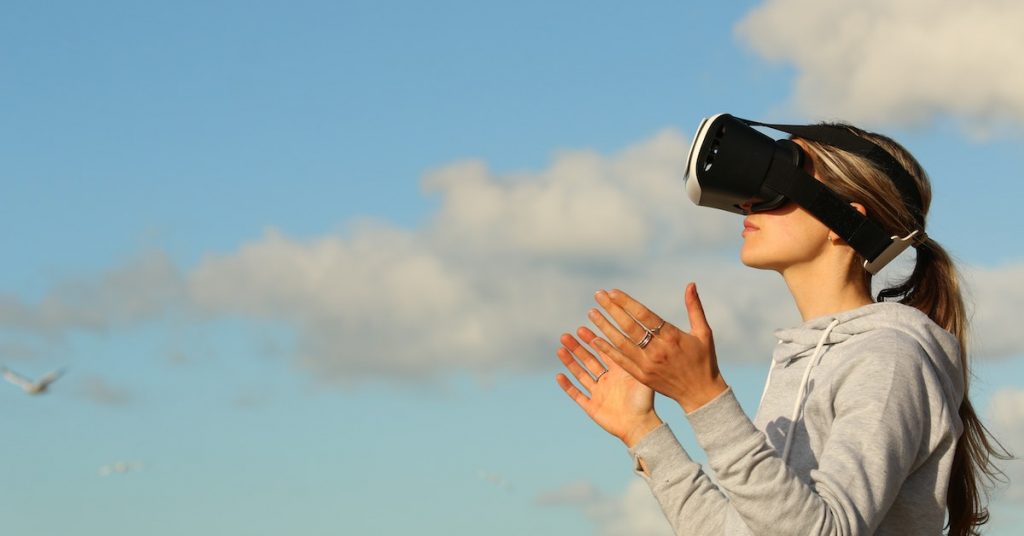Augmented Reality (AR) and Virtual Reality (VR) are transforming the way we interact with digital content. As these technologies become more accessible and mainstream, integrating Augmented Reality and Virtual Reality offers new possibilities for immersive, engaging, and interactive applications. Here we discuss the benefits of incorporating AR and VR into web experiences, the technologies available, and how to get started with integrating these cutting-edge technologies into your web projects.
The Benefits of AR and VR in Web Experiences
Integrating Augmented Reality and Virtual Reality into web experiences can provide numerous benefits, including:
- Enhanced user engagement: AR and VR can create immersive experiences that captivate users and increase their interaction with your content.
- Improved learning and training: AR and VR offer new ways to deliver educational content, providing more effective and engaging learning experiences.
- Increased conversions: By offering unique and interactive experiences, AR and VR can help drive sales and increase conversion rates for online retailers.
Web Technologies
Several web technologies facilitate the integration of Augmented Reality and Virtual Reality:
- WebXR: WebXR is a collection of APIs that provide a unified way to create AR and VR experiences in the browser, abstracting away the complexities of working with different hardware and platforms.
- Three.js: Three.js is a popular JavaScript library for creating 3D graphics in the browser, which can be used to build both AR and VR experiences.
- A-Frame: A-Frame is an open-source web framework for building AR and VR experiences using HTML and JavaScript, simplifying the development process.
Getting Started
To begin integrating Augmented Reality and Virtual Reality into your web projects, follow these steps:
- Choose a technology: Select the appropriate technology for your needs, such as WebXR, Three.js, or A-Frame, based on your project requirements and familiarity with the tools.
- Learn the basics: Familiarize yourself with the chosen technology by reviewing documentation, tutorials, and sample projects.
- Design your experience: Plan your AR or VR experience, considering factors such as user interaction, 3D models, and animations.
- Develop your application: Use the chosen technology to build your AR or VR experience, following best practices for performance and user experience.
Best Practices
To create successful Augmented Reality and Virtual Reality web experiences, consider the following best practices:
- Optimize performance: AR and VR experiences demand high-performance graphics rendering. Ensure that your application is optimized to minimize latency and maintain smooth frame rates.
- Design for accessibility: Make your AR and VR experiences accessible to users with different abilities and devices, considering factors such as navigation, text legibility, and alternative input methods.
- Test on multiple devices: Test your AR and VR experiences on various devices and platforms to ensure compatibility and a consistent user experience.
Use Cases
AR and VR can be integrated into web experiences across various industries and applications, including:
- E-commerce: Online retailers can use AR to let customers virtually try on products or see how items would look in their homes, while VR can create immersive virtual showrooms.
- Education: AR and VR can be used to create interactive educational content, such as virtual field trips, 3D models, and simulations.
- Marketing: Brands can leverage AR and VR to create engaging marketing campaigns, product demos, and interactive experiences that help tell their story and showcase their products.
- Entertainment: Web-based AR and VR experiences can be used to create interactive games, virtual concerts, and immersive storytelling experiences.
Overcoming Challenges
Despite the potential of AR and VR in web experiences, developers may face certain challenges when working with these technologies:
- Limited browser support: While most modern browsers support AR and VR technologies, some older browsers may not, which can limit the reach of your experiences.
- Hardware requirements: Some AR and VR experiences may require specific hardware, such as high-performance GPUs or dedicated headsets, which may not be available to all users.
- Bandwidth constraints: Delivering high-quality AR and VR content can consume significant bandwidth, potentially affecting load times and performance for users with slow or unreliable internet connections.
By carefully considering these challenges and implementing appropriate optimizations, you can ensure that your AR and VR web experiences are accessible and enjoyable for as many users as possible.
The Future of AR and VR in Web Experiences
As AR and VR technologies continue to evolve, their integration into web experiences will likely become more widespread and seamless. Some developments to watch for include:
- Improved browser support: As AR and VR technologies gain wider adoption, we can expect better support in browsers, making it easier to develop and deploy these experiences.
- Advancements in WebXR: The WebXR API is continually evolving, with new features and capabilities being added to support more advanced AR and VR experiences.
- Proliferation of AR and VR devices: As more affordable and accessible AR and VR devices enter the market, a larger audience will be able to experience web-based AR and VR content, driving demand for these immersive experiences.
By staying informed about the latest advancements in AR and VR technologies and understanding their potential impact on web experiences, developers can be better prepared to embrace these innovations and create the next generation of immersive web applications.
Integrating AR and VR into web experiences offers exciting opportunities to create engaging and immersive content that can captivate users and set your web applications apart. By understanding the available technologies, following best practices, and carefully designing your AR and VR experiences, you can harness the power of these cutting-edge technologies to create unique and memorable web experiences.




